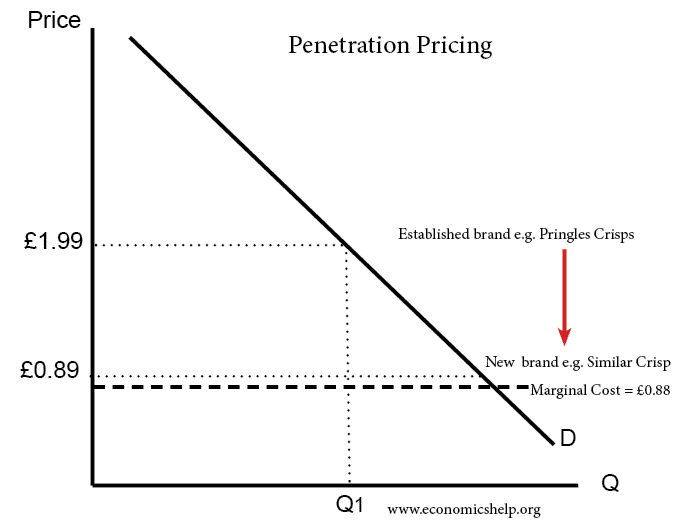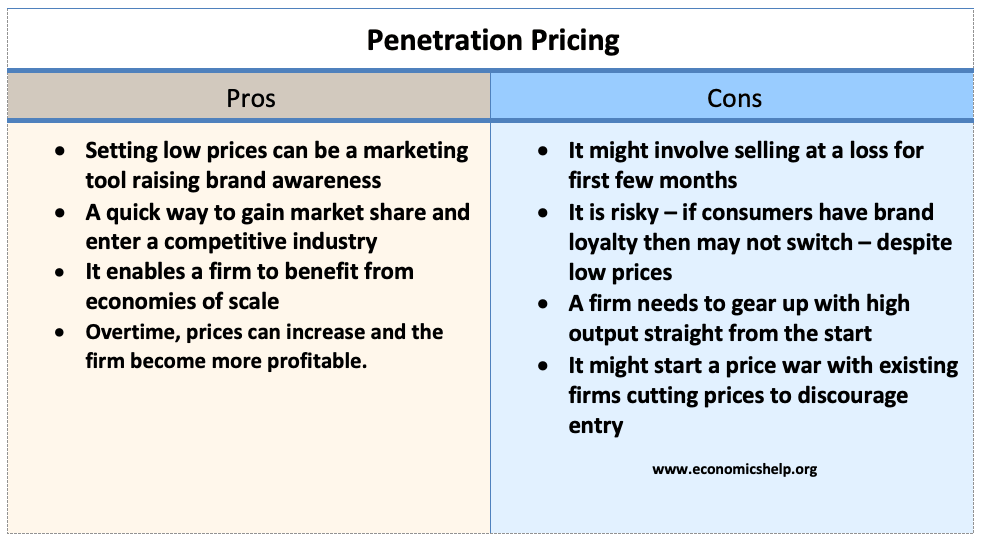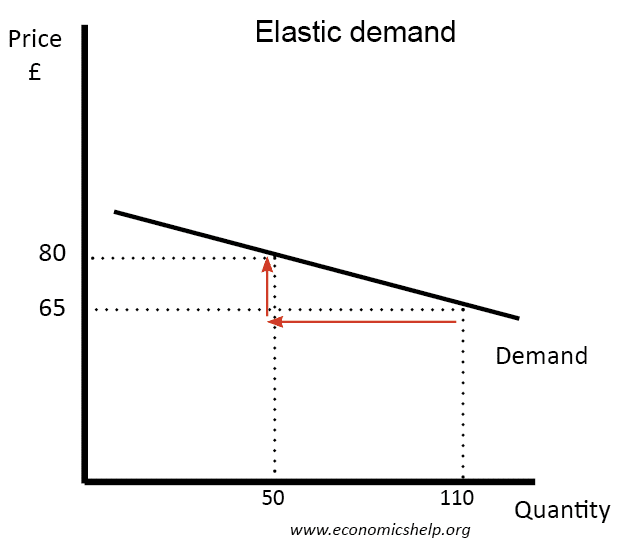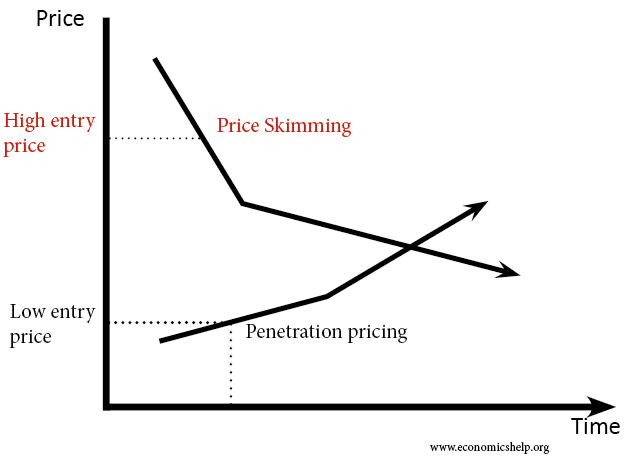Penetration pricing is a strategy used by a firm who wishes to enter a new market and gain a high market share through selling at a low price.
The aim of penetration pricing is to attract a loyal customer base through offering the most competitive price in the market and undercutting rivals and well-known brands.
Penetration pricing is also a marketing ploy. By setting eye-catching low prices, the firm hopes that it will be able to gain consumer awareness of the firm’s entrance into the market.

The existing brand sells at £1.99 which is a good profit margin, but they have strong brand loyalty. If the firm sells a high quantity, they believe the marginal cost of production is £0.88, therefore, they can sell at £0.89 to try and take some market share from the existing brand.
The drawback of penetration pricing for a firm is that in the short-term it will make a loss or very low profit. But if penetration pricing is successful, then over time, it can slowly start to increase prices.
Example of penetration pricing
The UK supermarket industry is very competitive, for a new rival to enter the market it will need to compete on price. European supermarkets Lidl and Aldi entered the market setting low prices – often lower than main rivals Tesco and Sainsbury’s – this enabled them to gain a growing market share.
Amazon prime delivery. Amazon has aimed at penetration pricing in many aspects of its business. It has offered discounted delivery rates. Services like Amazon Prime which includes free tv programmes have been sold at a large discount to attract customers to sign up and get used to Amazon way of shopping.
Pros and cons of penetration pricing

Pros
- Setting low prices can be a marketing tool raising brand awareness.
- A quick way to gain market share and enter a competitive industry.
- It enables a firm to benefit from economies of scale, which enables lower average costs and a firm to compete.
- Over time, prices can increase and the firm becomes more profitable.
Cons
- It might involve selling at a loss for first few months.
- It is risky – if consumers have brand loyalty then may not switch – despite low prices.
- A firm needs to gear up with high output straight from the start,
- It might start a price war with existing firms cutting prices to discourage entry.
- Consumers with inelastic demand will gain large increase in consumer surplus.
Evaluation – when is penetration pricing beneficial for a firm?
- It suits large multinationals who can afford to run at a loss for a few months and take the risk.
- It is more desirable for markets where the price is an important factor, e.g. where demand is price elastic – food, internet provision. It might be damaging for a market where brand image and perceived quality are more important. For example, selling a new brand of clothing – low price might reflect low quality.

If demand is elastic a small price cut sees a bigger % increase in demand.
The difference between penetration pricing and price skimming
Whilst penetration pricing targets a low price on entry. Price skimming does the opposite. It sets a high price for entry to the market. With price skimming, a firm is aiming to get consumers with inelastic demand to pay the higher price before starting to cut its price.

Related concepts
